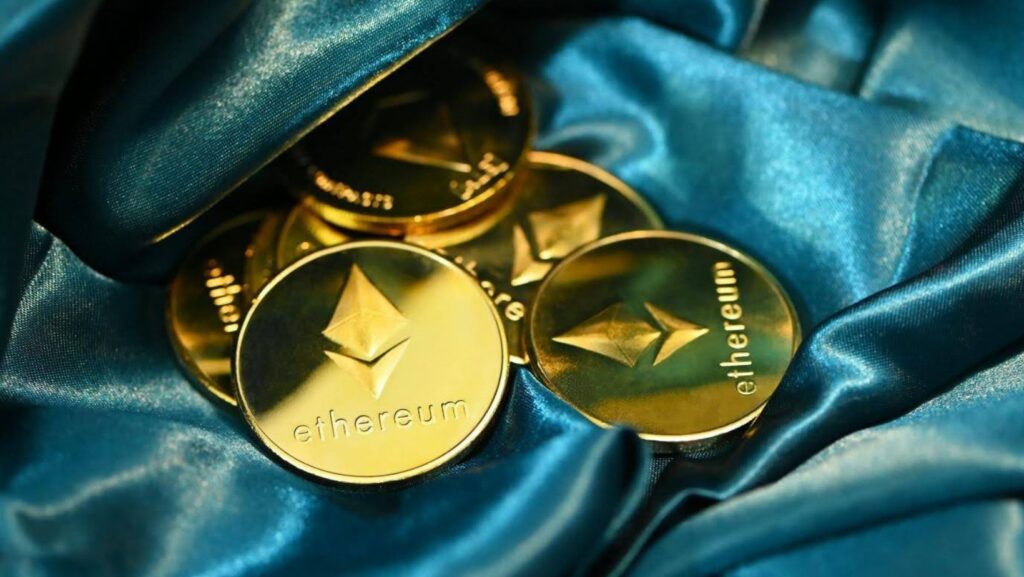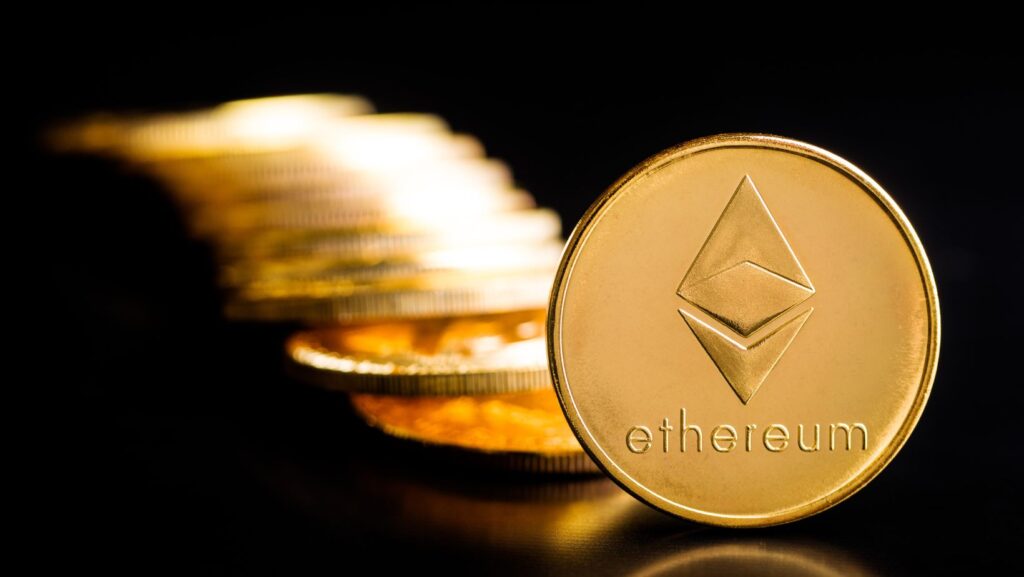
Ethereum is the world’s second most popular decentralized blockchain with smart contract functionality, second only to Bitcoin in terms of market capitalization. Its native currency is known as Ether, but it is also referred to as “Ethereum” at times, being intrinsically linked to the network that supports it. Ethereum functions as an open-source software and was first conceived in 2013 by Vitalik Buterin, its most prominent co-founder. The platform went live in 2015 following a crowdfunding campaign and has since become a global leader in the crypto industry.
One of the main reasons why Ethereum is performing well for investors is that it has centered its brand on innovation and development, a feat not easily achieved in a market as dynamic and volatile as the cryptocurrency market. Ethereum is a pioneer in the fields of decentralized finance and applications, two systems that could provide the economic sector with the tools needed to reduce reliance on financial intermediaries, such as banks, brokerages, or exchanges.
The ETH/BTC pair has shown a very strong performance, with the price steadily climbing and improving each month. This isn’t surprising, as the entire crypto market is performing well at the moment, meaning that Ethereum will likely not be an exception. However, it also means that traders need to adjust their strategies to ensure they make the best choices regarding their finances. A new upgrade is also on its way, and the periods preceding these launches have consistently been associated with good performance.
What is the Fusake upgrade?
Throughout its history, Ethereum has been associated with upgrades, updates, and innovation, as the network continually seeks ways to improve and enhance its performance. The platform’s core developers have chosen November to release Fusaka, a major hard fork protocol that will make the network much more efficient and scalable. These features have been troublesome for Ethereum as the network continues to expand, and not having good scalability means that the transaction fees become unsustainable for many investors, as their costs become prohibitive.
When that happens, the network suffers from a lack of engagement as well. Feature upgrades pertaining to the Glamsterdam hard fork, the upgrade set to succeed Fusaka, will be confirmed at the beginning of August. These changes came as the Ethereum trading community has been continuously pushing for faster and more frequent upgrades in order to improve the protocol more consistently. The current timelines indicate that Fusaka’s launch will occur approximately six months after Ethereum’s most recent hard fork. Pectra, which introduced account abstraction to the platform, increased the staking limit for validators and made layer-2 solutions substantially more efficient.
The devnet
According to ethPandaOps, a well-known community dedicated to enhancing the Ethereum ecosystem, the Fusaka hard fork will release a devnet first. This concept refers to localized and isolated blockchain environments that can be used for quick testing and development. They are essential for smart contracts and decentralized applications, serving as a playground for building and testing features that can then be deployed to testnets that are more public, or even the mainnet. Their fundamental nature means that testnets are not accessible to everyone, as their purpose is to allow developers to test how the upgrades function and whether they require new changes or iterations to be functional and yield the best results.
Doing this in a controlled environment is the best approach, as it creates and provides the conditions of a real blockchain, meaning the setting is realistic without the high stakes of an actual decentralized ledger environment. Making mistakes here doesn’t mean losing funds, and it allows developers to pinpoint if something doesn’t work as it should and identify areas that need improvement.
Improvement proposals
Eleven improvement proposals will be part of this development, including EIP-7825. The aim of this protocol is to enhance Ethereum’s resilience against hacker attacks while also facilitating network scalability. The Ethereum core developers have also discussed raising the gas limit to 150 million. EIP-7907 has been removed in order to speed up the testing process, as its purpose is to double the contract code size limit and introduce gas metering to ETH.
The EVM Object Format upgrade will not be part of Fusaka either. This upgrade has been somewhat controversial among community members as it would introduce a more structured format for bytecodes in order to improve the modularity and security of smart contracts, but at the same time, it would risk compatibility issues, problems with the compatibility timeline, and additional complexities that could lead to unforeseen and negative circumstances for the blockchain.

Two testnets will be introduced in September and October, while the final launch is expected during the first week of November. Some of the more recent proposed upgrades include reducing the block time of the Ethereum network from twelve to six seconds. This change is believed to help with user experience as well as make decentralized finance apps much more efficient. However, this potential update is still very new, and, if approved, it will be launched with the Glamsterdam fork sometime in 2026.
EIP-4200 and EOF
EIP-4200 is one of the EOF EIPs that offers an alternative to JUMP and JUMPI instructions, which allow programs to move execution to arbitrary byte offsets. Execution that operates in this manner can cause hard-to-spot bugs and make it easier to hide malware in data points. EUP-4750 seeks to disallow dynamic JUMP in EOF smart contracts and reject them altogether during the latter phases of EOF deployment. They are to be replaced by call functions and return to function calls.
Developers who still use JUMP post-upgrade will need to have their bytecode go through deploy-time validation so that they aren’t able to jump into data or the middle of a different instruction. According to Binance.com CTO Rohit Wad, “Crypto. It’s just going to happen. It’s just a matter of time.”, and these upgrades serve to speed up the process.
The Ethereum ecosystem continues to shift and change, and the investors must change the way they trade alongside the platform if they want to be successful in their endeavors. Anytime there’s an upgrade, Ethereum is improved, so a new development will make the ecosystem more secure and easier to interact with.















